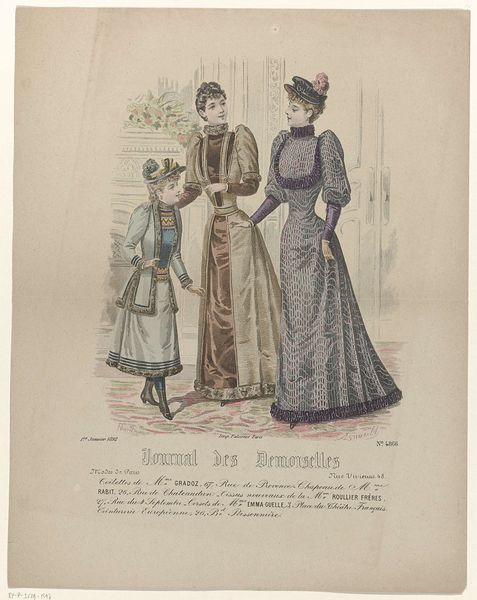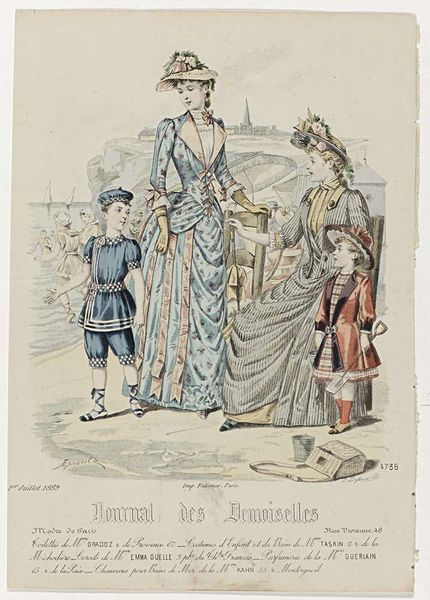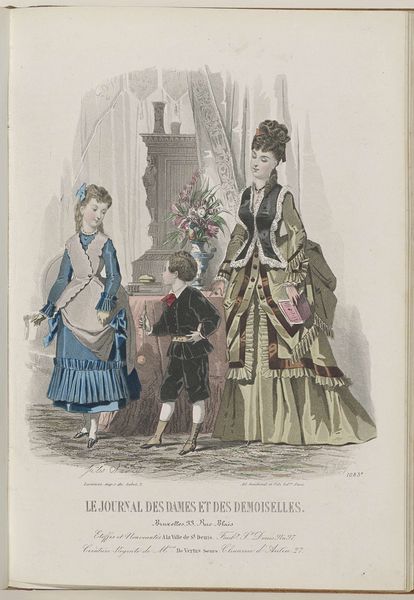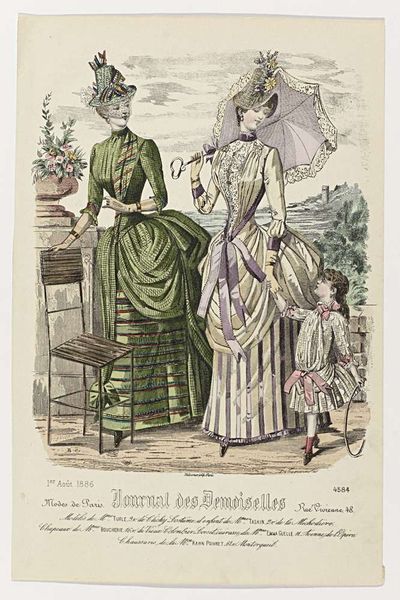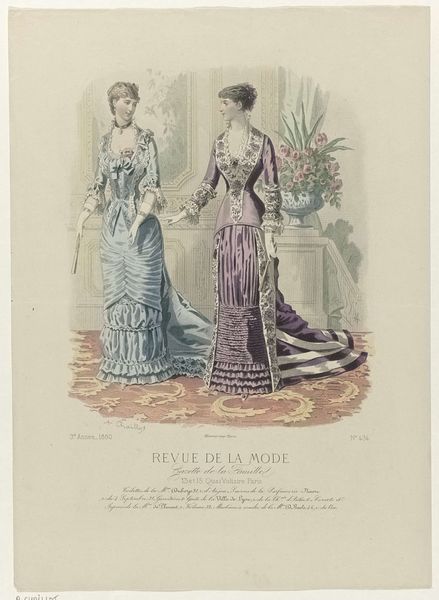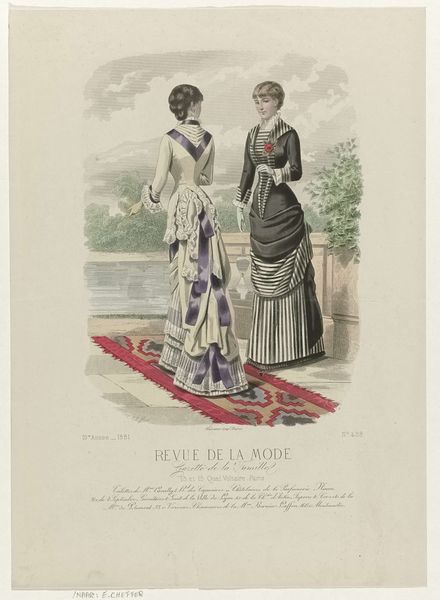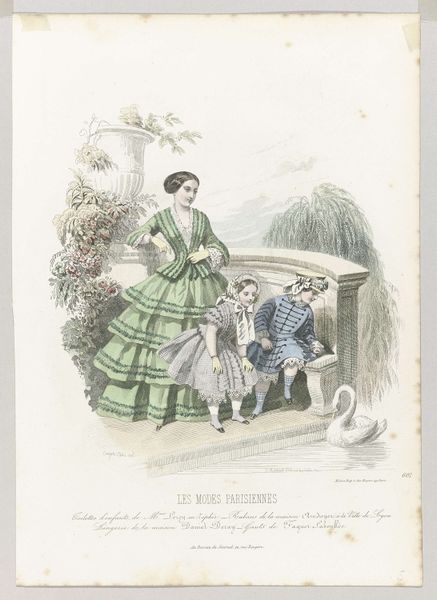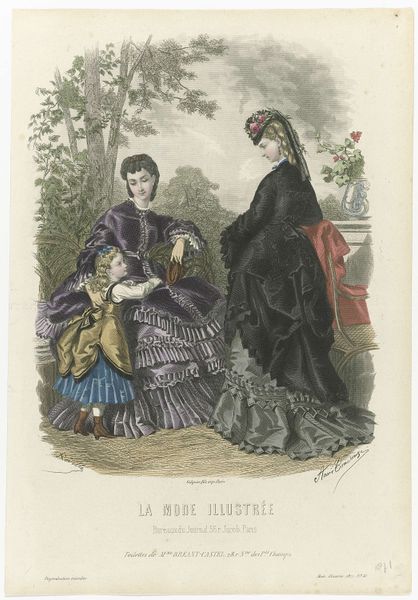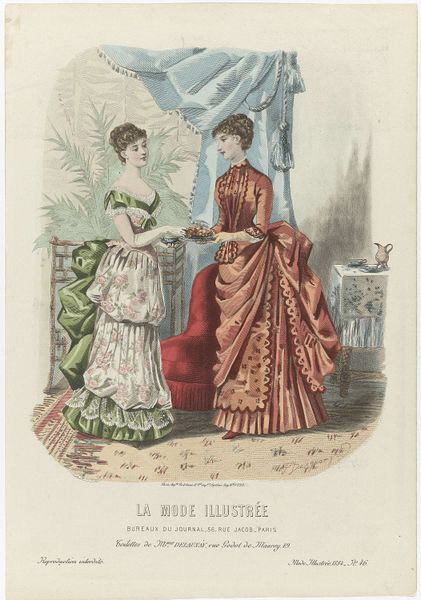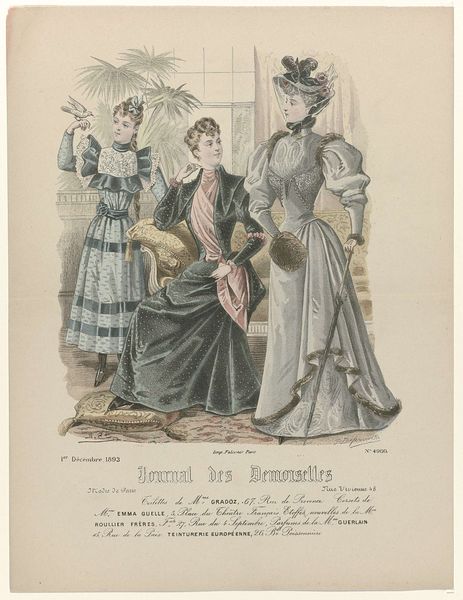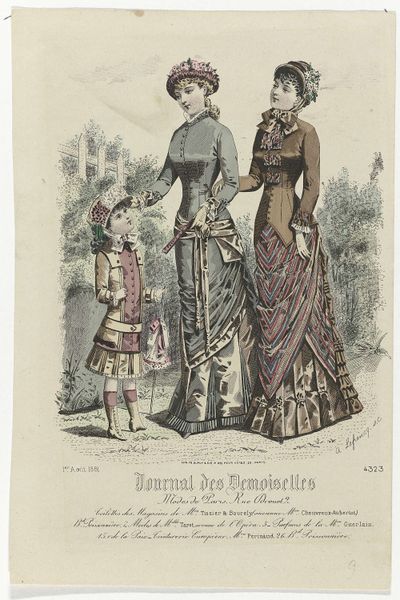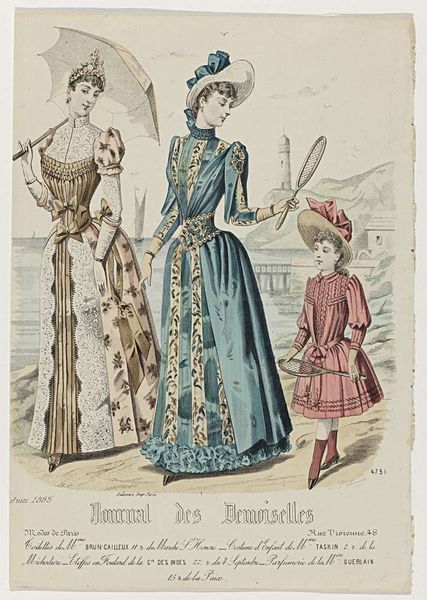
Journal des Demoiselles, 1 Juillet 1891, Nr. 4840 : Toilettes de Mme Gradoz (...) 1891
0:00
0:00
drawing, print, paper, ink
#
portrait
#
drawing
#
art-nouveau
# print
#
figuration
#
paper
#
ink
#
watercolour illustration
#
genre-painting
#
dress
Dimensions: height 317 mm, width 223 mm
Copyright: Rijks Museum: Open Domain
Curator: Looking at "Journal des Demoiselles, 1 Juillet 1891," a print by A. Chaillot from 1891, what strikes you immediately? Editor: It's intriguing, this display of fashionable life. My eyes are drawn to the textures and how the materiality of those garments informs the representation of class and labor. I’m particularly interested in the contrast of textiles – those stripes and floral patterns – and how they communicate status. Curator: Precisely. This image provides a fascinating glimpse into the visual culture of the late 19th century, especially concerning gender roles and societal expectations for women. Note how the idealized figures uphold an image of bourgeois femininity tied to notions of domesticity and elegance. Editor: These "toilettes" speak to a larger system of production. The means to create these intricate dresses involves layers of industry, labor and resources, think about where the materials originated and who sewed the seams. That is far beyond these women as subjects of adornment. Curator: Yes, the labor embedded in these clothes is easy to overlook. Also, let’s consider the child—probably part of that system of display—is almost rendered as another prop within this constructed scene, symbolizing innocence and a future perpetuation of these norms. Editor: And look at the boy’s toy wheelbarrow. We must consider what the item itself reveals about that child’s labor and material expectations, within that system. Even play carries symbolic weight. Curator: True. Furthermore, "Journal des Demoiselles" speaks volumes about the female gaze. This print catered specifically to a female audience, informing their understanding of fashion and aspirational lifestyles. Editor: Thinking about it all I am increasingly focused on this publication's role within this ecosystem, and its active hand in fostering specific demands around luxury, manufacturing, and material excess. Curator: Ultimately, examining A. Chaillot's print lets us dissect the intersecting systems of representation, production, and power at play during this historical moment. Editor: Exactly, and it reminds me of how material culture is inextricably linked to social structures and continues to affect identity today.
Comments
No comments
Be the first to comment and join the conversation on the ultimate creative platform.
